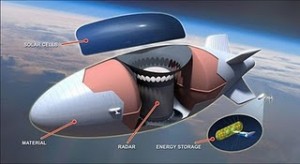Lockheed Martin has awarded a contract to ATK to provide the Thermal Control Subsystem for the Integrated Sensor is Structure (ISIS) programme, an integral part of the Defense Advanced Research Projects Agency (DARPA) ISIS Airship. Lockheed Martin leads an industry team in the development of an airship-based autonomous unmanned sensor with unique capabilities to track ground and air targets.
The scope of work to be performed on the ISIS programme includes designing, developing, building, and testing hardware that performs heat acquisition, heat transport, and heat rejection for two complete thermal systems. The baseline design for both systems is a pumped two-phase fluid loop which interfaces with large, lightweight radiator panels attached to the vehicle power-bay. Work on the contract will be performed at ATK’s Beltsville, MD facility.
The DARPA Integrated Sensor is Structure (ISIS) project is trying to make a blimp which has massive sensors as part of the blimp structure A demonstration unit should be flying around 2012-2014. ISIS will provide “unsurpassed situational awareness with a surveillance range of 187 miles for individuals on the ground and 373 miles for advanced cruise missiles”.
The goal of the ISIS program is to develop a stratospheric airship based autonomous unmanned sensor with years of persistence in surveillance and tracking of air and ground targets. It will have the capability to track the most advanced cruise missiles at 600 km and dismounted enemy combatants at 300 km. The ISIS program will develop the technologies that enable extremely large lightweight phased-array radar antennas to be integrated into an airship platform. ISIS uses a large aperture instead of high power to meet radar performance requirements. This approach exploits the platform’s size and conforms to the platform’s limitations on weight and power. Major technical challenges are the development of ultra-lightweight antennas, antenna calibration technologies, power systems, station keeping approaches, and airships that support extremely large antennas.

